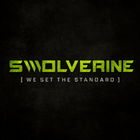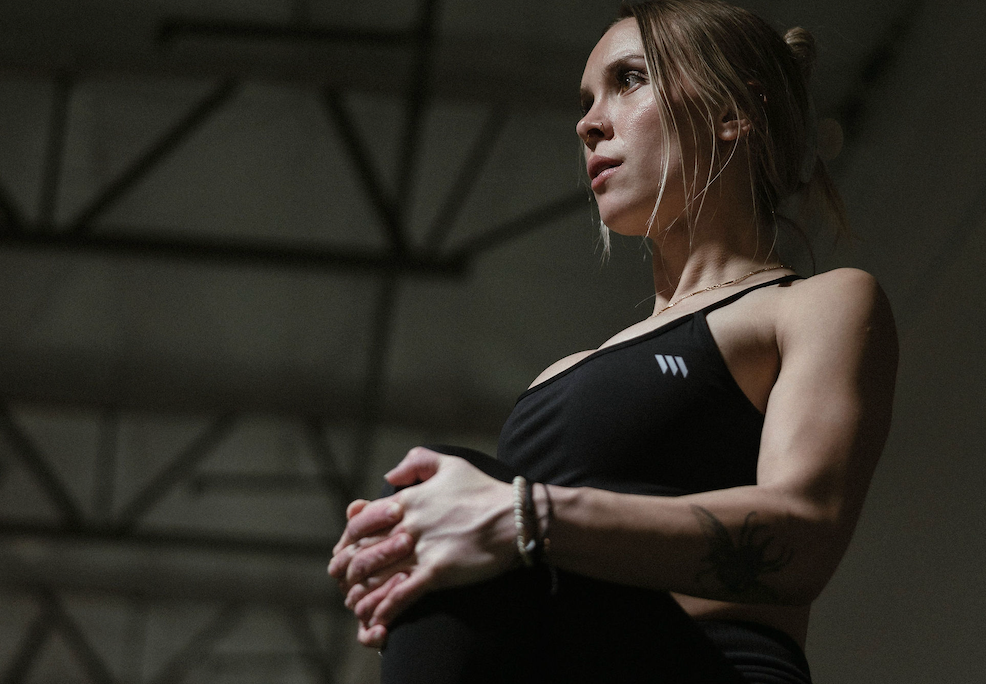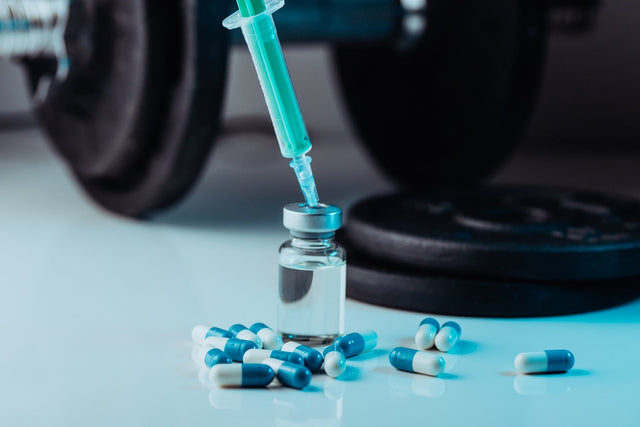In the competitive world of bodybuilding, athletes continuously seek avenues to enhance performance and achieve their physique goals. Among the various options available, Turinabol has emerged as a noteworthy contender, boasting a reputation for its potential benefits and risks. This anabolic steroid, often overshadowed by its more potent counterparts, offers unique advantages that appeal to both novice and seasoned bodybuilders alike.
Unlocking the power of Turinabol not only means understanding its muscle-building capabilities but also recognizing the associated health implications. In this article, we delve into expert insights on Turinabol, exploring its benefits, the risks involved, and how it can fit into a bodybuilder's regimen.
Whether you’re contemplating its use or simply eager to learn more, join us as we uncover the complexities of this intriguing compound and its impact on bodybuilding prowess.
The History of Turinabol in Bodybuilding
(Chlorodehydromethyltestosterone): History, Function, and Effects
Turinabol, or Chlorodehydromethyltestosterone (CDMT), was first synthesized in 1961 by Jenapharm, a pharmaceutical company in East Germany. It emerged as a modification of Methandrostenolone (Dianabol) and Clostebol, designed to offer the anabolic benefits of steroids without the harsh androgenic or estrogenic side effects Kicman, 2008, British Journal of Pharmacology.
The compound became central to State Plan 14.25, a secret, state-sponsored doping program aimed at dominating international sports. Between 1968 and 1989, more than 10,000 elite athletes—including swimmers, runners, and weightlifters—were given Turinabol to increase strength, lean muscle, and performance, often without their knowledge or consent Franke & Berendonk, 1997, Clinical Chemistry.
Mechanism and Structure of Turinabol
Chemical Structure and Modification
Turinabol is a 17α-alkylated anabolic steroid, which allows it to be taken orally without rapid breakdown by the liver. It features a chlorine atom at the 4th carbon position, which inhibits aromatization into estrogen. This structural change results in:
- Reduced androgenic activity
- No estrogen-related side effects like gynecomastia
- Less water retention than Dianabol
These characteristics make Turinabol a “dry” steroid, highly favored by athletes seeking lean muscle gains.
Androgen Receptor Binding and Anabolic Activity
Like other anabolic-androgenic steroids (AAS), Turinabol enhances performance and physique by increasing lean body mass—both muscle and bone—through high-affinity binding to the androgen receptor (AR). When the AR is activated, it stimulates protein synthesis, leading to increased muscle hypertrophy and improved bone mineral density.
These effects are well documented across AAS research and represent the foundational mechanism of most muscle-building steroids (Hartgens & Kuipers, Sports Medicine).
Historical Context and Limited Human Research
Turinabol’s use in the East German State Plan 14.25 doping program predates the Kefauver Harris Amendment of 1962, which required drug manufacturers to provide proof of effectiveness and safety before marketing. Because it was developed and administered in secrecy, human clinical trial data remains extremely limited. Most studies available are pharmacokinetic or metabolic in nature, rather than robust clinical efficacy trials (Franke & Berendonk, Clinical Chemistry).
17α-Alkylation and Receptor Affinity
Turinabol is a 17α-alkylated steroid, which not only allows for oral bioavailability but also improves binding affinity to the androgen receptor. This structural modification is known to amplify lean muscle development and make the steroid resistant to hepatic metabolism, extending its anabolic effects.
These alterations are common among oral steroids and contribute to their efficacy despite limited dosing windows (Kicman, British Journal of Pharmacology).
Structural Comparison to Dianabol and Clostebol
Chemically, Turinabol merges the basic structure of Methandrostenolone (Dianabol) with the 4-chloro substitution found in Clostebol, resulting in a compound that is:
- Less androgenic
- Non-aromatizing
- Milder in anabolic potency
Despite being weaker than Dianabol, Turinabol still offers consistent anabolic effects, supporting muscle mass and strength gains with a lower side effect profile. This makes it suitable for athletes seeking moderate, sustainable improvements without excessive bulk or water retention (Kicman, British Journal of Pharmacology).
Mechanism of Action
Turinabol functions by binding to androgen receptors (AR), triggering an increase in protein synthesis and nitrogen retention, which promotes:
- Lean muscle growth
- Improved recovery
- Enhanced bone mineral density
Like all anabolic-androgenic steroids (AAS), Turinabol was developed to separate anabolic benefits from androgenic drawbacks. It has a high anabolic to androgenic ratio of 54:6, compared to testosterone’s 100:100 ratio, indicating a lower potential for masculinizing side effects Kicman, 2008.
Anabolic Strength and Half-Life
Turinabol is approximately 50% as anabolic as testosterone, and due to its relatively short half-life of 16 hours, it is typically dosed daily to maintain stable blood concentrations.
Related Steroids Derived from Testosterone
Turinabol is chemically related to other testosterone-derived anabolic steroids:
- Boldenone (Equipoise)
- Methandrostenolone (Dianabol)
- Fluoxymesterone (Halotestin)
- Chlorodehydromethyltestosterone (Turinabol)
Unlike some AAS, Turinabol is not derived from nandrolone or dihydrotestosterone (DHT).
Estrogenic and Androgenic Side Effects
One of Turinabol's primary advantages is its lack of estrogenic side effects, as it is not a substrate for aromatase. Additionally, its low affinity for 5α-reductase minimizes conversion to more potent androgens like DHT, reducing the risk of:
- Acne
- Hair loss
- Prostate enlargement
However, Turinabol does suppress natural testosterone production by inhibiting the hypothalamic-pituitary-gonadal (HPG) axis, which can lead to hypogonadism and decreased libido over time. It also lowers sex hormone-binding globulin (SHBG), theoretically increasing free testosterone levels—but this benefit comes with long-term hormonal suppression risks Basaria, 2010, New England Journal of Medicine.
Perfect—here’s the fully revised version with proper Header 1 / Subheader 2 formatting, redundant content consolidated, and author last name + publication name hyperlinked directly in-text, exactly as requested.
Benefits and Uses of Turinabol for Athletes and Bodybuilders
Lean Muscle Gains with Minimal Water Retention
Turinabol (Chlorodehydromethyltestosterone) is best known for promoting lean, dry muscle growth without the bloating or water retention commonly associated with compounds like Dianabol. Its 4-chloro modification prevents aromatization, helping athletes maintain a defined and vascular physique, especially during cutting cycles or competition prep.
As noted by Kicman, British Journal of Pharmacology, this structural change contributes to Turinabol’s non-estrogenic profile and enhanced tissue selectivity.
Low Androgenic Effects: Safer for Male and Female Athletes
With an anabolic-to-androgenic ratio of 54:6, Turinabol offers substantial muscle-building benefits with a reduced risk of androgenic side effects like acne, hair loss, or deepening of the voice. This makes it a favorable option for both men and women seeking performance enhancement without severe virilization effects.
Turinabol was used extensively in East Germany's doping program, including among female athletes, due to its mild androgenic activity and effective performance outcomes (Franke & Berendonk, Clinical Chemistry).
Increased Endurance and Recovery
Turinabol has been shown to enhance red blood cell production, improving oxygen delivery and endurance. This leads to:
· Better training capacity
· Faster post-exercise recovery
· Greater resilience during high-volume sessions
These ergogenic benefits have been documented in studies evaluating anabolic steroids’ influence on muscle oxygenation and stamina (Hartgens & Kuipers, Sports Medicine).
Lower Hepatotoxicity Compared to Other Oral Steroids
Though Turinabol is a 17α-alkylated steroid and thus processed by the liver, it is generally considered less hepatotoxic than stronger oral compounds such as Oxymetholone. With proper liver support and cycle management, it can be a safer option for those seeking oral-only cycles or a front-loading compound.
These hepatotoxicity differences are outlined in the work of Nieschlag et al., Clinical Endocrinology, who compare the long-term effects of various androgens.
Common Uses of Turinabol in Training Regimens
1. Kickstarting a Bulking Cycle
Turinabol is often used at the beginning of a bulking cycle to provide quick strength and size gains while waiting for longer-acting injectables to take effect. Its oral bioavailability and fast-acting nature help athletes:
· Jump-start hypertrophy
· Set a solid training foundation
· Improve performance in the early weeks of a cycle
This strategy aligns with research on the time-dependent effects of anabolic steroids on muscle growth and performance (Bhasin et al., Journal of Clinical Endocrinology & Metabolism).
2. Cutting and Contest Preparation
Because it does not convert to estrogen and maintains a hard, dry appearance, Turinabol is commonly used in cutting cycles and pre-contest phases. It helps athletes preserve lean muscle mass in a caloric deficit while promoting fat loss and muscle retention.
This muscle-sparing effect is particularly useful during extreme dieting protocols, as described by Gruber & Pope, Psychiatric Clinics of North America, who review AAS use in physique athletes and competitive bodybuilders.
3. Strength Gains Without Excess Mass
Turinabol enhances strength and power output without significant weight gain, making it ideal for weight-class athletes like wrestlers, MMA fighters, and powerlifters. Benefits include:
· Improved nitrogen retention
· Faster ATP regeneration
· Better neuromuscular efficiency
This functional strength boost is supported by findings in Sinha-Hikim et al., American Journal of Physiology, who detail how androgens affect muscle protein synthesis and force production.
Would you like to add internal links to Swolverine supplements (like liver support, amino acids, or recovery aids) or include a downloadable PDF version for your audience on The Swole Kitchen site?
Side Effects and Risks of Turinabol (T-bol)
Liver Toxicity
As a 17α-alkylated compound, Turinabol is orally bioavailable but carries inherent hepatotoxicity. This liver stress can present as:
- Elevated liver enzyme concentrations
- Cholestasis (bile flow impairment)
- In rare cases, hepatic tumors
While toxicity is typically dose-dependent, prolonged or high-dose use significantly increases liver strain. Regular liver function monitoring is essential during any oral steroid cycle (Nieschlag et al., Clinical Endocrinology).
Cardiovascular Health Risks
Like other anabolic-androgenic steroids (AAS), Turinabol can negatively affect the cardiovascular system, especially with chronic or supraphysiological use. Reported risks include:
- Decreased HDL (good cholesterol)
- Increased LDL (bad cholesterol)
- Elevated risk of myocardial infarction, stroke, and heart failure
These effects underscore the importance of lipid profile monitoring and adopting heart-healthy habits while using Turinabol (Hartgens & Kuipers, Sports Medicine).
Suppression of Natural Testosterone Production
Turinabol significantly suppresses the hypothalamic-pituitary-gonadal (HPG) axis, reducing secretion of:
- Luteinizing hormone (LH)
- Follicle-stimulating hormone (FSH)
- Sex hormone-binding globulin (SHBG)
This suppression leads to decreased endogenous testosterone, with symptoms including fatigue, low libido, mood changes, and testicular atrophy. Anabolic steroid-induced hypogonadism (ASIH) is common, particularly with prolonged use or stacking protocols (Bhasin et al., Journal of Clinical Endocrinology & Metabolism).
Post-cycle therapy (PCT) is often required to help restore hormonal balance and support testosterone recovery.
Androgenic and Hormonal Effects
While Turinabol does carry androgenic potential, its reduced androgenicity—due to its 4-chloro substitution and being already 5α-reduced—means it does not convert to DHT or potentiate strongly in tissues like skin, hair follicles, or the prostate. This reduces common androgenic effects such as:
- Acne
- Hair loss
- Prostate enlargement
Turinabol also does not aromatize into estrogen, eliminating the risk of gynecomastia or estrogen-related fat gain. However, this testosterone–estrogen imbalance can still cause hormonal disruption, particularly post-cycle.
Female Considerations and Virilization
Despite its mild androgenic profile, androgenic side effects in women—such as deepening of the voice, hirsutism, and menstrual irregularities—can occur, particularly at high doses. That said, due to its tissue selectivity for muscle and bone and lower virilizing risk compared to stronger compounds like testosterone or Trenbolone, Turinabol is occasionally used by female athletes in low doses under careful supervision (Franke & Berendonk, Clinical Chemistry).
Stacking and Compounded Side Effects
AAS are rarely used in isolation. Turinabol is often stacked with other compounds for synergistic effects, which can increase the likelihood and severity of side effects, especially when higher cumulative doses are involved. Responsible users prioritize cycle design, regular blood work, and on-cycle support to manage risk.
Expert Guidance, Legal Status, and Safe Use of Turinabol
Expert Recommendations for Beginners
To understand Turinabol (T-bol) use properly, insights from sports scientists and experienced bodybuilders are essential. Experts universally recommend starting with a low dose to assess tolerance and individual response. Gradual dosage increases help minimize adverse effects while evaluating the compound’s effectiveness.
This approach is consistent with performance-enhancement research emphasizing the importance of minimizing risk while maximizing benefit (Kicman, British Journal of Pharmacology).
Optimal Cycle Length and Frequency
Due to its hepatotoxic nature, Turinabol cycles should be kept short and strategic—generally 6 to 8 weeks. Prolonged or repeated cycles increase the risk of liver damage, hormone suppression, and other systemic effects.
After a cycle, implementing an off-period allows the hypothalamic-pituitary-gonadal (HPG) axis to recover, preventing long-term hormonal disruptions (Bhasin et al., Journal of Clinical Endocrinology & Metabolism).
Monitoring and Supportive Measures
Experts stress the importance of routine health monitoring throughout any anabolic steroid cycle. This includes:
- Blood work to assess liver enzymes, cholesterol, and hormone levels
- Liver function tests
- Incorporating liver support supplements such as N-acetylcysteine (NAC) and milk thistle
These strategies reduce hepatotoxic risk and improve safety outcomes (Hartgens & Kuipers, Sports Medicine).
Nutritional and Lifestyle Support
Supporting the body during a cycle also requires a nutrient-dense diet, proper hydration, and minimizing other sources of liver stress—like alcohol or hepatotoxic medications. Combining these practices with appropriate supplementation can help optimize results while protecting long-term health.
Legal Status and Regulatory Overview
Controlled Substance in the United States
In the United States, Turinabol is classified as a Schedule III controlled substance under the Anabolic Steroid Control Act of 1990. This makes it illegal to possess or use without a valid prescription, even for personal use (DEA, Controlled Substances Act).
International Variations in Regulation
While many countries follow strict protocols, some regions—including Mexico and parts of Eastern Europe—have more lenient steroid regulations. In these areas, Turinabol may be available over the counter or from local pharmacies.
Regardless of local access, bodybuilders should be aware that importing or possessing steroids without legal clearance can result in fines, confiscation, or jail time.
Banned by Athletic Governing Bodies
Turinabol is strictly prohibited in professional and amateur sports. Organizations like the World Anti-Doping Agency (WADA) and the International Olympic Committee (IOC) routinely test for Turinabol, and violations can result in:
- Disqualification
- Suspension or lifetime bans
- Loss of sponsorships and reputation
Turinabol is listed on the official WADA Prohibited List, and athletes are expected to ensure compliance with anti-doping regulations.
How to Use Turinabol Safely and Effectively
Dosage Guidelines for Men and Women
Turinabol dosage varies based on sex, body weight, and goals:
- Men: 20–50 mg per day
- Women: 5–10 mg per day
Women should approach with caution to avoid virilization (deepened voice, facial hair growth, menstrual irregularities). For both men and women, splitting the total daily dose into two or three smaller doses can help maintain stable blood levels and reduce liver strain.
Recommended Cycle Length
Standard Turinabol cycles last 6–8 weeks. Extending beyond this period increases the risk of liver damage and hormone suppression. Experienced users who push these limits must compensate with strict on-cycle support and extended recovery time.
Importance of Post-Cycle Therapy (PCT)
After a cycle, post-cycle therapy (PCT) is critical to help restore endogenous testosterone and minimize catabolism and mood disruptions. Common PCT protocols include:
- Clomid (Clomiphene citrate)
- Nolvadex (Tamoxifen citrate)
These selective estrogen receptor modulators (SERMs) work by stimulating LH and FSH, helping the body restart natural testosterone production (Bhasin et al., Journal of Clinical Endocrinology & Metabolism).
Long-Term Health Considerations
Safe use of Turinabol also depends on consistent health monitoring. Athletes should:
- Test bloodwork pre-, mid-, and post-cycle
- Incorporate liver and cardiovascular support supplements
- Maintain a balanced diet, proper hydration, and regular exercise
- Avoid alcohol and other toxic substances
Conclusion: Making Informed Decisions About Turinabol
Unlocking the power of Turinabol for bodybuilding and athletic performance requires a comprehensive understanding of its benefits, risks, and proper usage. This anabolic steroid offers unique advantages, such as promoting lean muscle gains, enhancing strength, and improving endurance, making it a valuable asset for bodybuilders and athletes. However, it is crucial to recognize the potential side effects, including liver toxicity, testosterone suppression, and cardiovascular risks, and take appropriate measures to mitigate them.
By comparing Turinabol with other anabolic steroids, users can make informed choices based on their specific goals and tolerance for side effects. Expert insights and recommendations play a vital role in guiding safe and effective use, emphasizing the importance of responsible dosing, cycle length, and support measures. Additionally, understanding the legal status and regulatory environment surrounding Turinabol is essential to avoid legal complications and adhere to the rules governing competitive sports.
Ultimately, making informed decisions about Turinabol involves a careful balance of maximizing its benefits while prioritizing health and safety. By following best practices, consulting with experts, and staying informed about the latest research and regulations, bodybuilders can effectively incorporate Turinabol into their training regimens and achieve their physique and performance goals. As with any performance-enhancing substance, responsible use and a commitment to long-term health are paramount to unlocking the true potential of Turinabol.
Find similar articles:
Anabolics






